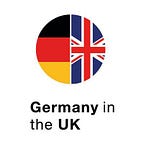Greifswald — Caspar David Friedrich’s birthplace on the Baltic Sea
The university and Hanseatic city of Greifswald lies on the Eastern German Baltic Sea coast between the islands of Rügen and Usedom, in the Bay of Greifswald (Greifswalder Bodden). Its vast skies and open landscape have inspired romantic painter Caspar David Friedrich, who was born here in 1774. The town with just over 57,600 inhabitants is part of Chancellor Angela Merkel’s constituency, Vorpommern-Rügen-Greifswald.
Things to see and do
Greifswald University
Founded in 1456, Greifswald’s is the second oldest university in the Baltic Sea region with roughly 10,000 students and 6,000 staff. The various faculties are spread throughout the city, with the main building nestled between Nikolai Cathedral and Jacobikirche. Tours of the main building include the auditorium and the well preserved detention cells, where students sentenced for disciplinary violations were held between 1885 and 1914. Contemporary sources report that this “punishment” often turned into a social event, as the detainees were allowed visitors.
Click here for more information
Museum Harbour
The “Greifswalder Museumshafen” on the river Ryck is the largest museum harbor in Germany. It features more than 50 ships, from historic schooners to tugs and barges, reminiscent of the heyday of sailing in the mid-19th century. Information boards in front of the ships provide facts about the type of vessel, year of construction and history. Some of the ships are still on the move and take guests for a sailing trip on board, others have been converted into restaurant ships.
Click here for more information
Eldena Beach and monastery ruin
Follow the course of the river Ryck out of the city centre towards Greifswalder Bodden to reach the district Eldena. In the summer, the Baltic Sea makes for a great swim on Eldena Beach, or take in the endless horizon on a winter walk. Not far from the beach are the ruins of the former Cistercian monastery Hilda, made famous by Casper David Friedrich’s painting “Eldena ruin in the Giant Mountains”. Every year in June, the artisinal market “Eldenaer Klostermarkt” is held.
Click here for more information
Wiek and the drawbridge
A small fishing village closeby, Wieck is characterised by thatched fishermen’s cottages, bobbing fishing boats and traditional seafood restaurants. Come here for some of Greifswald’s best Backfischbrötchen (fried fish in a bun). A major landmark, the historic wooden draw bridge connecting Wiek and Eldena, is in operation to this day.
Click here for more information
Pommersches Landesmuseum
Along with the Theatre, the Pommeranian Country Museum is Greifwald’s biggest cultural institution. It houses stunning artworks by Greifswald born and internationally acclaimed romantic painter Caspar David Friedrich. It also houses changing exhibitions, so make sure to check what is on before you go.
Click here for more information
Food and drink
Owing to the large student population, Greifswald is certainly not short of pub. Fritz Braugasthaus, located in a 13th century merchant’s house on the Greifswald market square, is famous for regional fare and beer brewed on-site, which have attracted Federal President Frank Walter Steinmeier and Chancellor Angela Merkel on recent visits. Student-run Café Küstenkind offers home-made cakes, quiches and lemonades in a shabby-chic setting. In the evening, head to Café Ravic for drinks in a living room-like ambience with frequent live piano concerts.
Click here for more information
British-German Town Twinnings
Town twinnings between British and German cities play an important role in promoting cultural exchange. Greifswald has been twinned with Kingston upon Hull since 1996.
